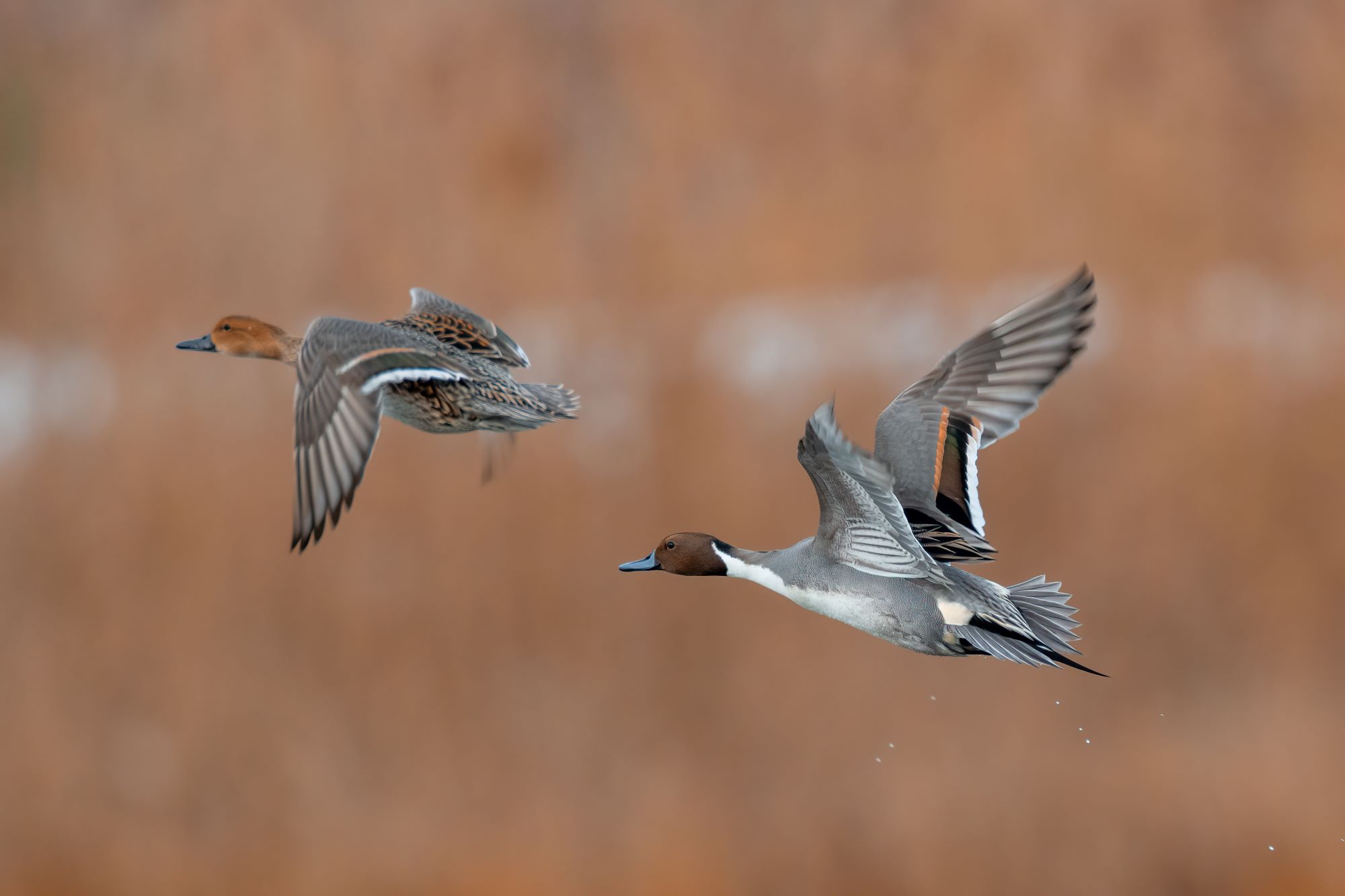
Northern Pintails in Utah
Northern Pintails, with their distinctive elegance and grace, are a notable feature in Utah's rich avifauna, not only as winter visitors but also as breeding residents. These ducks are easily recognized by their sleek, slender bodies and long, pointed tails, characteristics especially pronounced in males. The male Northern Pintail is marked by a chocolate-brown head, white neck, and gray body, while the female is mottled brown, blending effectively into the marshy breeding grounds. In Utah, Northern Pintails are versatile in habitat selection, utilizing the state's diverse wetlands, from freshwater marshes and ponds to the riparian areas along rivers and the Great Salt Lake, providing them with ample breeding and foraging grounds.
Breeding season is a significant time for Northern Pintails in Utah. They typically select nesting sites in dense vegetation near water, offering protection and proximity to food. The female builds the nest, a shallow depression on the ground lined with grass and down, where she lays her clutch of 7 to 9 eggs. Incubation lasts about three weeks, during which the female diligently guards and warms the eggs. The males, while not involved in nesting or incubation, are often seen patrolling nearby waters. Once hatched, the precocial ducklings are led to water by their mother, where they quickly learn to forage, feeding on insects and small invertebrates – a high-protein diet essential for their growth.
Foraging habits of Northern Pintails in Utah are adapted to take advantage of the state's abundant food resources. These ducks are dabblers, feeding on the surface of shallow waters or tipping forward to reach deeper aquatic plants. Their diet is varied, including seeds, aquatic vegetation, and invertebrates, which are plentiful in Utah's wetlands. During the breeding season, their diet shifts to include more insects and small aquatic animals, providing the necessary nutrients for egg development and duckling growth. This varied diet plays a crucial role in the ecosystem, aiding in the control of aquatic vegetation and invertebrate populations.
The conservation of suitable wetland habitats is crucial for the breeding success of Northern Pintails in Utah. These environments, essential for their nesting and feeding, face threats from human-induced changes such as development, agricultural expansion, and water diversion. Efforts to protect, manage, and restore these wetland habitats are vital, ensuring that Northern Pintails, along with a multitude of other wetland-dependent species, continue to thrive in Utah. Conservation initiatives often involve collaboration between wildlife agencies, non-profit organizations, and local communities, all working towards the common goal of preserving these vital ecosystems.
For birdwatchers and wildlife enthusiasts, the Northern Pintail offers a unique opportunity to observe one of Utah's most elegant waterfowl species. Their presence in the state's wetlands enhances the biodiversity and ecological complexity of these areas. Observing Northern Pintails, whether in the beauty of their breeding plumage, the intricacies of their nesting behavior, or their efficient foraging, provides a window into the fascinating life of wetland ecosystems. The Northern Pintail's presence in Utah's wetlands is not only a sign of ecological health but also a symbol of the natural beauty and diversity that wetland habitats support.